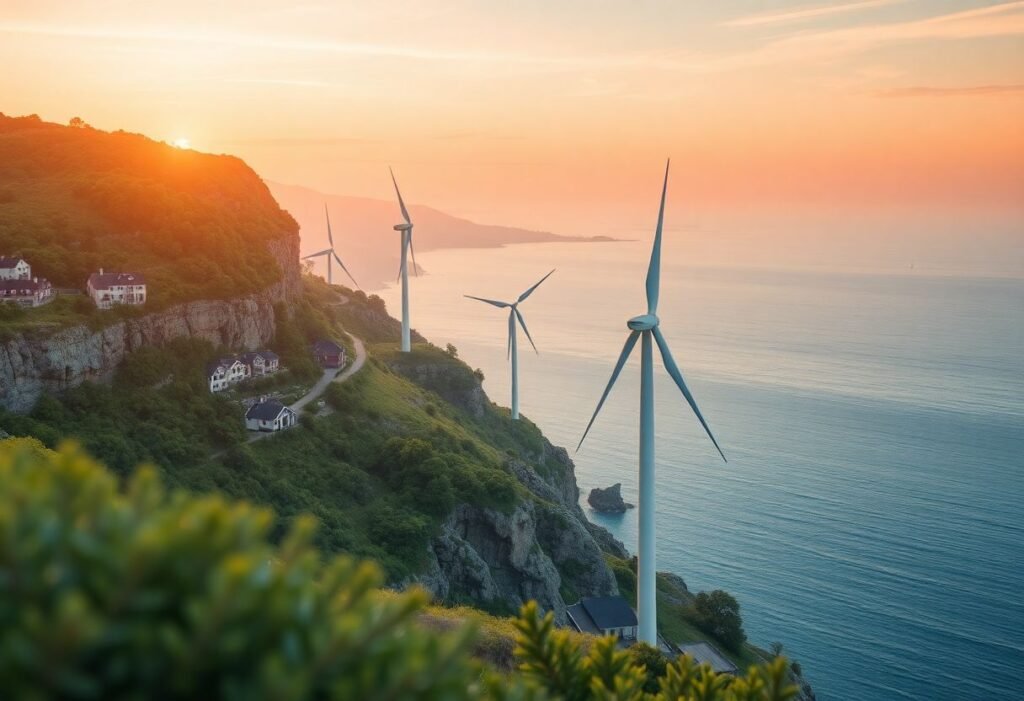Wind energy is revolutionizing the way we think about sustainable development and innovation. With the increasing urgency of climate change, the need for clean, renewable energy sources has never been greater. Wind energy, as an innovative solution, plays a crucial role in reducing greenhouse gas emissions while promoting economic growth and technological advancement.
The Role of Wind Energy in Sustainable Development
Wind energy is a crucial factor in sustainable development. By harnessing natural wind patterns, wind turbines convert kinetic energy into electricity, which reduces reliance on fossil fuels. This transition not only mitigates climate change but also promotes energy independence. Countries that invest in wind energy often experience increased job opportunities in installation, maintenance, and technology development. Moreover, wind energy contributes to diversifying the energy mix, enhancing grid reliability and resilience. Overall, embracing wind energy is essential for a sustainable future, aligning economic growth with ecological preservation.
Technological Innovations Driving Wind Energy
Recent technological advancements have significantly impacted the wind energy sector. Innovations such as larger turbine blades and improved generators have increased efficiency and energy output. Offshore wind farms are becoming more prominent, utilizing stronger and more consistent winds available at sea. Additionally, digital technologies such as IoT sensors and AI are employed to optimize turbine performance and maintenance schedules, ensuring higher productivity and reduced operational costs. These advancements contribute to making wind energy a more viable and attractive option compared to other energy sources.
Economic Benefits of Wind Energy
The economic implications of wind energy development are profound. Investment in wind infrastructure stimulates local economies by creating jobs—from construction to operation and maintenance of wind farms. Additionally, it promotes manufacturing opportunities for components like turbines and blades, fostering innovation within the supply chain. Tax incentives and renewable energy credits make wind projects financially attractive for investors, further boosting economic growth. As countries transition towards greener energy portfolios, they stand to gain economic resilience and competitiveness on a global scale.
Wind Energy and Community Involvement
Community engagement plays a vital role in the success of wind energy projects. Local stakeholders often have the opportunity to participate in decision-making processes, ensuring that projects align with community values and needs. Support for wind energy can lead to educational initiatives where surrounding communities learn about the benefits and workings of wind power, fostering acceptance and support. Additionally, some wind farms offer financial benefits to local residents, creating a sense of ownership in these renewable energy resources, which strengthens community ties while promoting sustainability.
Wind Energy’s Role in Combatting Climate Change
Wind energy is an essential ally in the fight against climate change. As one of the cleanest energy sources available, it has a minimal environmental footprint compared to fossil fuels. The implementation of wind energy significantly helps decrease greenhouse gas emissions, contributing to a decrease in global warming. According to studies, a substantial increase in wind energy utilization can dramatically reduce reliance on carbon-heavy energy sources, providing a cleaner and healthier environment. Accelerating the shift towards wind energy is critical for meeting international climate targets and fostering a sustainable planet.
The Future of Wind Energy Innovations
The future of wind energy looks promising with continual innovations shaping its trajectory. Research is ongoing into energy storage solutions that will complement wind energy by addressing the intermittency issue. Hybrid systems that combine wind with solar power or battery storage are gaining attention, allowing for more stable energy supply. Additionally, advancements in AI and machine learning are paving the way for smarter grid management, optimizing the integration of wind energy into existing systems. As we move forward, the potential for further innovations will only expand, making wind energy a cornerstone of a sustainable energy future.
Disclaimer: The information provided in this article is for informational purposes only and does not constitute professional advice.





















